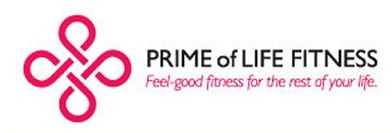You may have heard about functional fitness, a relatively new trend in fitness training, but you likely still have questions. Here’s a round-up of all the essential information you need to understand this fitness trend and determine if it’s a good choice for you.
What Is It?
Functional fitness is whole-body fitness that doesn’t look only at training specific muscles. Rather, functional fitness trains your muscles, joints and nerves to work together efficiently to produce movement when you want it and the stability to support that movement and maintain your balance. Functional fitness ensures that you train your body to perform all five essential movements in all planes of motion.
Who Is It For?
Well, you, probably! Functional fitness is a hot trend among trainers who work with mature adults, because it can help them age independently and manage the activities of daily living. Functional fitness is also attractive to non-athletes of any age who aren’t interested in competition and just want a fitness program that helps them remain healthy and feel good.
Why Should You Consider It?
Functional fitness is a smart way to train your body, because your muscles don’t work in isolation in real life. Even simple acts like walking or reaching something down from a shelf involve multiple muscles, joints and nerves working together. A functional fitness program trains them to work better together, so that you can manage your activities of daily living confidently, and without pain or discomfort. Many people never aspire to be athletes or fitness competitors. Functional fitness allows them to enjoy the benefits of fitness that are meaningful and useful to them.
When Should You Start?
Although functional fitness is often associated with older adults, it’s never too early to start training your body to move well. The healthy stability and movement patterns you develop now will continue to benefit you as you age. The sooner you begin a functional fitness program, the more likely you are to avoid muscle imbalances, along with posture and balance issues as you get older. That said, it’s never too late to start! Even sedentary individuals in their 70s and 80s have benefitted from beginning a functional fitness program.
Where Do You Do It?
You’ll need to find a personal trainer or gym with some expertise in functional fitness to get you started. You'll need to learn some basic principles and techniques, but one of the great things about functional fitness is that it can be practiced almost anywhere and with little or no equipment. You can follow a highly-effective functional fitness program in your own home.
How Does It Work?
A good functional fitness program starts from the inside out. First you develop the core strength and endurance you need to support your body during more complicated movements. Next you ensure that key joints are properly stabilized. And finally you practice a series of movements designed to train your body to be efficient in all five essential movements and combinations of those movements—just like you move in real life.
A study by the American Council on Exercise found that among a group of study participants aged 58-78, those who went through a four-week functional fitness program showed greater physical improvements than participants who did traditional exercise. In only four weeks, participants showed average improvements of
+13% lower body strength
+14% upper body strength
+7% cardiorespiratory endurance
+13% agility/dynamic balance
+43% shoulder flexibility
If you’re in the Denver metro area, schedule your complimentary posture and movement assessment and consultation to learn if a functional fitness program could benefit you.
(photo credit: LeeAnn Langdon)


